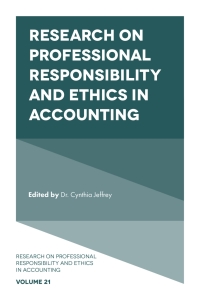Question
Part 1 [140 points] It is October 1, 2015, the first business day of the month, and you have just been hired as the accountant
Part 1 [140 points]
It is October 1, 2015, the first business day of the month, and you have just been hired as the accountant for ABC Inc., which operates with monthly accounting periods. For simplicity, ignore all sales tax considerations and assume that ABC Inc. sells one product. All of the company's accounting work has been completed through the end of September, 2015. ABC Inc.'s year end is October 31. The post-closing alphabetized trial balance at September 30, 2015 follows.
| ABC Inc.Post-Closing Trial BalanceSeptember 30, 2015 DebitCredit Accounts receivable 1133,500 Accounts payable 2 673,000 Accumulated depreciation, store equipment 113,700 Allowance for doubtful accounts 10,680 Cash1,422,004 Common shares 3 83,000 Interest receivable 4287 Merchandise inventory 51,520,000 Notes receivable 476,500 Prepaid advertising 635,000 Retained earnings 2,414,111 Store equipment 7133,700 Utilities payable 26,500 Totals3,320,9913,320,991 | 1See the Accounts Receivable Subledger below for details regarding customer balances. 2See the Accounts Payable Subledger below for details regarding creditor balances. 3There are an unlimited number of shares authorized with 20,000 shares issued and outstanding as at September 30, 2015. 4This is a 9% note due September 15, 2017 with interest collectible on the 15th of each month. Refer to the collection schedule below for the note details. Values in schedule have been rounded for convenience. 5See the Merchandise Inventory Subledger below for details of inventory holdings. 6The balance in Prepaid Advertising represents payment for 4 months starting October 1, 2015. 7See the Property, Plant and Equipment Subledger below for detailed information. |
You have determined that ABC Inc. uses the moving weighted average cost flow assumption under a perpetual system to account for merchandise inventory and that the terms of all credit sales are 2/10, n/30. Merchandise sells for $218 per unit. The following source documents are from October :
|
|
|
|
|
|
|
|
|
|
|
|
|
|
|
|
|
|
|
|
|
|
|
|
|
|
|
|
|
For all parts of the Case Study, round all calculations to two decimal places unless otherwise specified. a) Journalizing: Prepare journal entries based on an analysis of the preceding source documents and post-closing trial balance as well as the tables and subledgers below. Note that some source documents may not require an entry. Use the gross method for recording purchases. Enter an appropriate description when entering the transactions in the journal. Dates must be entered in the format dd/mmm (ie. January 15 would be 15/Jan).
General JournalPage GJ1DateAccount/ExplanationFDebitCredit1/Oct
Rent expense, selling space
2,240
Rent expense, office space
3,360
Cash
5,600
Paid cash for rent
2/Oct
Accounts Receivable, Callaho Inc.
AR370,600
Cost Of Goods Sold
Sales
Merchandise Inventory
MI
Sold merchandise on credit
5/Oct
Cash
General JournalPage GJ2DateAccount/ExplanationFDebitCredit
b) Posting: Posting from the general journal into the subledgers is required. Posting in the general ledger is not required. The subledgers used in this case study are Accounts Receivable (AR), Accounts Payable (AP), Merchandise Inventory(MI), and Property, Plant and Equipment (PPE). The subledgers can be found below. Transactions affecting the subledgers must be posted by using the subledger abbreviations AR, AP, MI, and PPE in the folio (F) column. For transactions that do not affect one of these subledgers, leave the F column blank. The posting reference to be used in the subledgers will be the abbreviation for the general journal (GJ1 or GJ2 as appropriate). Merchandise Inventory Subledger (Acct. #119) (Note: Recalculate the Balance in Inventory's AvgCost/Unit after each transaction.). *All cost/unit calculations should be rounded to two decimal places.
Purchases/Transportation-In/Cost of Goods Sold/ (Purchase Returns/Discounts)(Returns to Inventory)Balance in InventoryDatePRUnitsCost/Unit*Total $UnitsCost/Unit*Total $UnitsAvgCost/Unit*Total $September 30BFWD19,000801,520,000 19,000801,520,000October 2 October 12 October 16 October 19 October 22 October 26 October 27
ABC Inc.Accounts Receivable SubledgerAcct. #10603; Callaho Inc.
DateDesc.FDebitCreditBalance
Acct. #10610; Ludwig Inc.
DateDesc.FDebitCreditBalance
Acct. #10611; Stake Technology Inc.
DateDesc.FDebitCreditBalance1/OctTerms 2/10, n/30BFWD133,500 133,500
ABC Inc.Accounts Payable SubledgerAcct. #20106; Star Inc.
DateDesc.FDebitCreditBalance
Acct. #20105; Benson Inc.
DateDesc.FDebitCreditBalance1/OctTerms 2/10, n/30BFWD 673,000673,000
Acct. #20108; Bentley Inc.
DateDesc.FDebitCreditBalance
Acct. #20109; Northstar Corp.
DateDesc.FDebitCreditBalance
Period EndingCollectionPrincipalInterestBalanceSeptember 15, 2015 76,500October 15, 20153,4952,92157473,579November 15, 20153,4952,94355270,636December 15, 20153,4952,96553067,671January 15, 20163,4952,98750864,684February 15, 20163,4953,01048561,674March 15, 20163,4953,03246358,642April 15, 20163,4953,05544055,587May 15, 20163,4953,07841752,509June 15, 20163,4953,10139449,408July 15, 20163,4953,12437146,284August 15, 20163,4953,14834743,136September 15, 20163,4953,17132439,965October 15, 20163,4953,19530036,770...............July 15, 20173,4953,418776,912August 15, 20173,4953,443523,469September 15, 20173,4953,469260 83,88076,5007,380
Property, Plant and Equipment Subledger Cost InformationDepreciation
Desc.
F
Purch. Date
Depr. Method
Cost
Residual
Life
Accum. Depr. Bal., September 30, 2015
Depr. Exp, October, 2015
Accum. Depr. Bal., October 31, 2015
Store EquipmentBFWDNov 12, 2011Double-Declining133,70020,0005113,700 Office Furniture Oct 9, 2015(Select One) ??Notes: 1. Calculated to the nearest whole month for partial periods. 2. For Double-Declining-Balance, depreciation is calculated for the fiscal year and then divided by the number of months the asset was used in that fiscal year to get the depreciation per month. Round final values to the nearest whole dollar.
| c) | What is the next step in the accounting cycle?
|
Step by Step Solution
There are 3 Steps involved in it
Step: 1

Get Instant Access to Expert-Tailored Solutions
See step-by-step solutions with expert insights and AI powered tools for academic success
Step: 2

Step: 3

Ace Your Homework with AI
Get the answers you need in no time with our AI-driven, step-by-step assistance
Get Started


